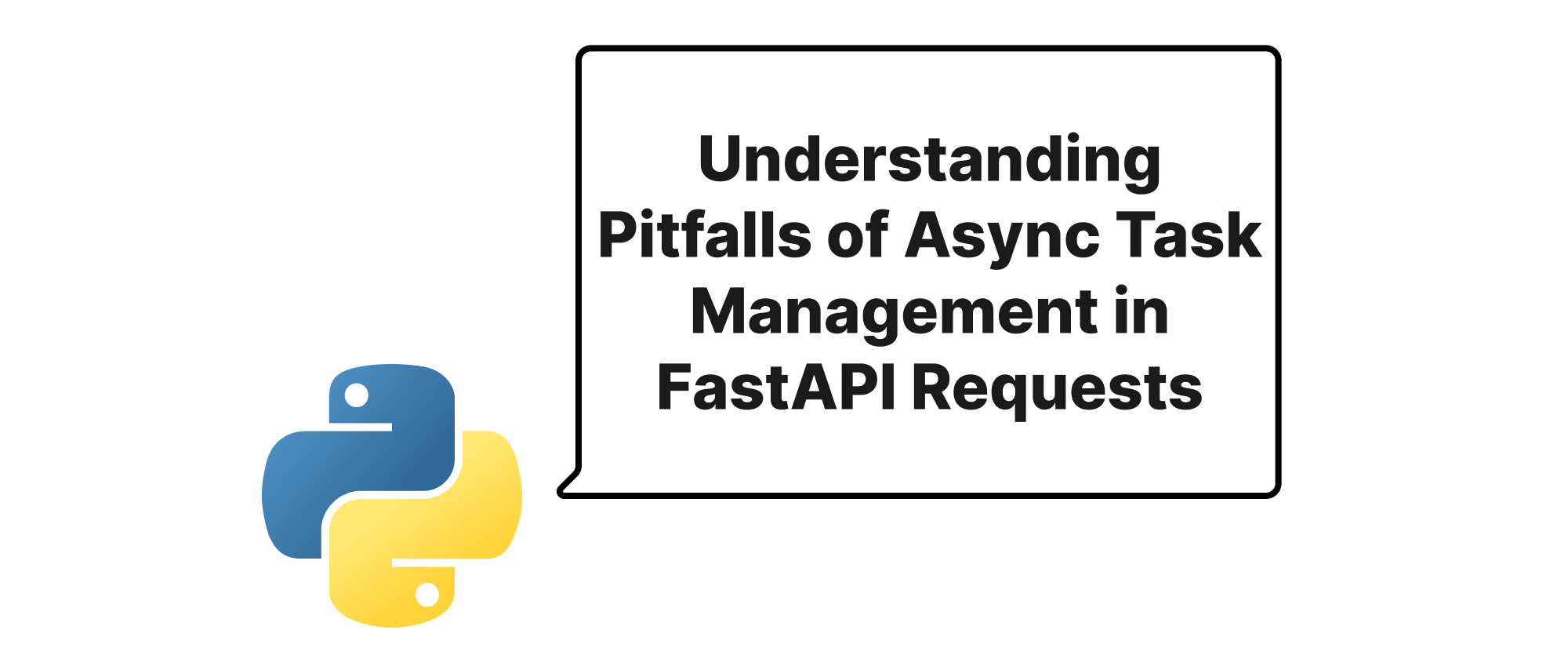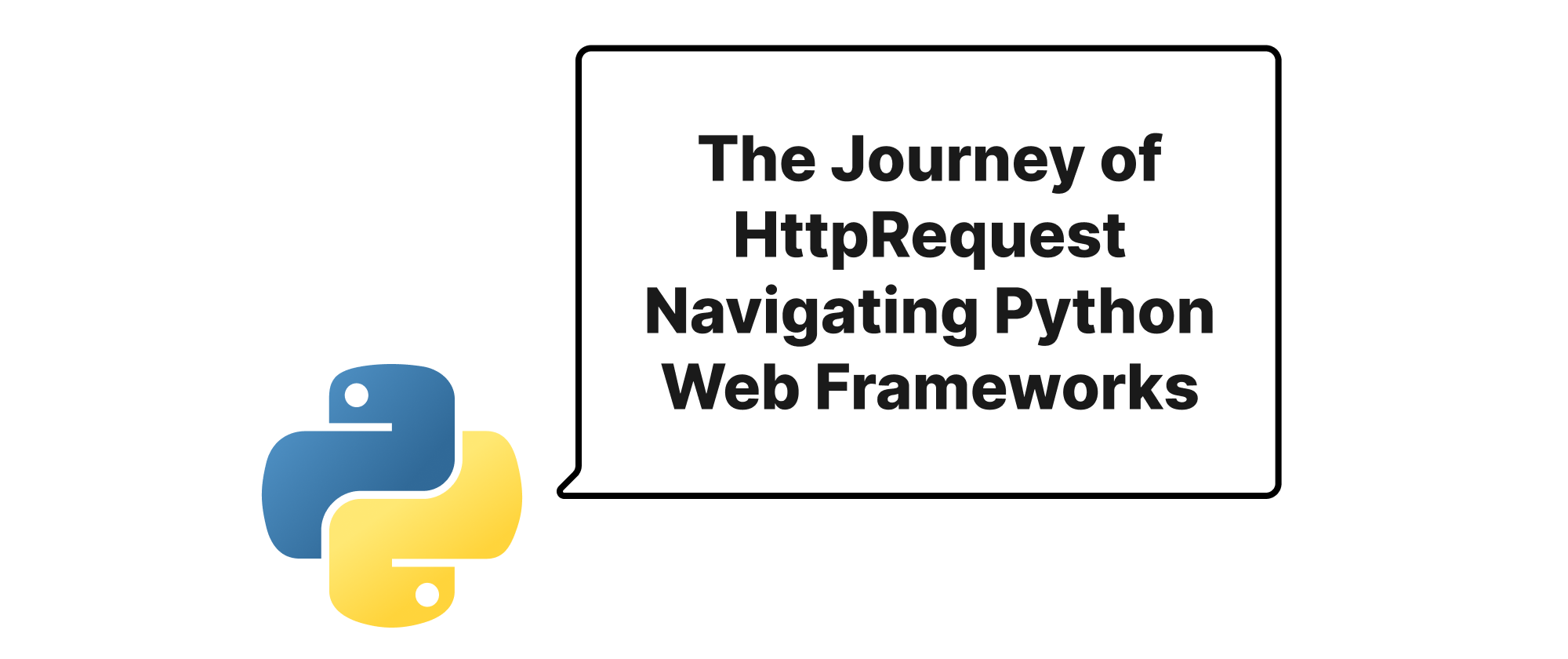Understanding Pitfalls of Async Task Management in FastAPI Requests
Min-jun Kim
Dev Intern · Leapcell

Introduction
FastAPI, with its asynchronous capabilities and inherent support for Python's asyncio library, has become a cornerstone for building high-performance web APIs. It empowers developers to handle many concurrent requests efficiently, a critical advantage in today's demanding web landscape. A common pattern in asynchronous programming, and in FastAPI specifically, is to offload long-running operations or side-effects to run in the background without blocking the main request-response cycle. This is often achieved using asyncio.create_task or FastAPI's BackgroundTasks feature. While incredibly powerful, their incorrect usage within the context of a FastAPI request can lead to subtle yet significant pitfalls, ranging from resource leaks to unexpected request behavior. This article will explore these common traps, providing clarity and actionable advice to ensure your FastAPI applications remain robust and efficient.
Common Pitfalls with Async Task Management
Before diving into the specifics of the pitfalls, let's establish a common understanding of the core concepts involved:
asyncio.create_task(): This function schedules a coroutine to be run as an independent task in theasyncioevent loop. It returns anasyncio.Taskobject immediately, allowing the caller to continue execution without waiting for the task to complete. The task will run concurrently with other tasks in the event loop.BackgroundTasks: FastAPI'sBackgroundTasksis a dependency injection mechanism specifically designed to manage tasks that should run after the HTTP response has been sent. It's a convenient wrapper aroundasyncio.create_taskfor this specific use case, ensuring that the background task's lifecycle is tied to the request's completion.- Request-Response Cycle: In a web framework like FastAPI, this refers to the complete journey of an HTTP request, from its arrival at the server to the sending of an HTTP response back to the client.
The primary goal of using asyncio.create_task or BackgroundTasks within a FastAPI request handler is to perform operations that should not delay the response to the client. This typically includes things like sending email notifications, logging analytics, updating search indexes, or processing computationally intensive data.
Pitfall 1: Unawaited asyncio.create_task for Critical Path Operations
One of the most common mistakes is to use asyncio.create_task for an operation that is, in fact, critical to the response. While create_task allows the immediate return of a task object, if the subsequent code depends on the completion or result of that task, simply creating it without awaiting it will lead to incorrect or incomplete responses.
Consider this example:
import asyncio from fastapi import FastAPI, HTTPException app = FastAPI() async def fetch_user_data(user_id: int): # Simulate a network call or database query await asyncio.sleep(2) return {"id": user_id, "name": f"User {user_id}"} @app.get("/user/{user_id}") async def get_user_status(user_id: int): # INCORRECT USAGE: Kicking off a task that's critical to the response user_data_task = asyncio.create_task(fetch_user_data(user_id)) # ... some other quick operations ... # The response here will likely not include the user data or will be empty # because user_data_task has not completed. return {"message": "User request received", "user_status": "processing"}
In this scenario, the get_user_status endpoint aims to return user data, but by using asyncio.create_task without awaiting user_data_task, the response is sent before fetch_user_data has a chance to complete. The client receives an incomplete or misleading response.
The Fix: If an operation's result is required for the immediate response, it must be awaited directly:
import asyncio from fastapi import FastAPI, HTTPException app = FastAPI() async def fetch_user_data(user_id: int): await asyncio.sleep(2) return {"id": user_id, "name": f"User {user_id}"} @app.get("/user/{user_id}") async def get_user_status_correct(user_id: int): # CORRECT USAGE: Await the critical operation user_data = await fetch_user_data(user_id) return {"message": "User data retrieved", "user": user_data}
Pitfall 2: Neglecting Error Handling in Background Tasks
When a BackgroundTasks or asyncio.create_task operation fails, by default, the exception is not propagated back to the originating request handler because the task runs independently. This can lead to silent failures, where errors occur in the background but are never reported to the user or even to your application's monitoring system.
import asyncio from fastapi import FastAPI, BackgroundTasks, HTTPException app = FastAPI() async def send_welcome_email(email_address: str): await asyncio.sleep(1) # Simulate email sending if "@" not in email_address: raise ValueError("Invalid email address for background task!") print(f"Welcome email sent to {email_address}") @app.post("/register/") async def register_user( username: str, email: str, background_tasks: BackgroundTasks ): # INCORRECT USAGE: No error handling for background task background_tasks.add_task(send_welcome_email, email) return {"message": f"User {username} registered. Email sending in background."}
If send_welcome_email raises a ValueError, the client receives a 200 OK response, but the email never gets sent, and the application remains unaware of the failure unless specific logging/monitoring is put in place within the background task itself.
The Fix: Implement robust error handling and monitoring within your background tasks. For asyncio.create_task, you can use task.add_done_callback to attach a callback that processes the task's result or exception. For BackgroundTasks, ensure your background functions have appropriate try...except blocks and logging. Consider using a dedicated message queue (e.g., Celery, Redis Queue) for critical background jobs that require retry mechanisms and guaranteed delivery.
import asyncio from fastapi import FastAPI, BackgroundTasks, HTTPException import logging app = FastAPI() logger = logging.getLogger(__name__) async def send_welcome_email_safe(email_address: str): try: await asyncio.sleep(1) if "@" not in email_address: raise ValueError("Invalid email address for background task!") logger.info(f"Welcome email sent to {email_address}") except Exception as e: logger.error(f"Failed to send welcome email to {email_address}: {e}") # Potentially push to a dead-letter queue or retry mechanism @app.post("/register-safe/") async def register_user_safe( username: str, email: str, background_tasks: BackgroundTasks ): # CORRECT USAGE: Background task with internal error handling background_tasks.add_task(send_welcome_email_safe, email) return {"message": f"User {username} registered. Email sending initiated."} # For tasks created with asyncio.create_task, you can add a done callback: async def my_long_running_job(): await asyncio.sleep(5) raise RuntimeError("Something went wrong in the background!") def handle_task_result(task: asyncio.Task): try: task.result() # This will re-raise the exception if one occurred except Exception as e: logger.error(f"Error in background job: {e}") else: logger.info("Background job completed successfully.") @app.get("/start-job/") async def start_job(): task = asyncio.create_task(my_long_running_job()) task.add_done_callback(handle_task_result) return {"message": "Background job started."}
Pitfall 3: Resource Leaks and Unmanaged Tasks
If you frequently create asyncio.Task objects without retaining references to them or without a mechanism to gracefully shut them down, you can inadvertently create resource leaks. Tasks consume memory and contribute to the event loop's overhead. While BackgroundTasks are managed by FastAPI (they are linked to the request lifespan), raw asyncio.create_task instances need more careful management.
Consider an application that starts a "monitoring" task for every active session, but these tasks are never explicitly cancelled or awaited when the session ends. Over time, this could lead to a growing number of zombie tasks.
import asyncio from fastapi import FastAPI app = FastAPI() # Store active tasks globally for management (simplified for example) active_monitoring_tasks = {} async def monitor_session(session_id: str): try: while True: await asyncio.sleep(1) # Simulate monitoring work print(f"Monitoring session: {session_id}") except asyncio.CancelledError: print(f"Monitoring session {session_id} cancelled.") @app.get("/start-monitor/{session_id}") async def start_monitor(session_id: str): # INCORRECT USAGE: Tasks stored globally without proper cleanup logic if session_id not in active_monitoring_tasks: task = asyncio.create_task(monitor_session(session_id)) active_monitoring_tasks[session_id] = task return {"message": f"Monitoring started for session {session_id}"} return {"message": f"Monitoring already active for session {session_id}"} # Without a corresponding /stop-monitor or application shutdown logic, # these tasks will keep running or remain as references.
If not managed, these tasks can run indefinitely or until the application shuts down, potentially consuming resources even when their original purpose is no longer relevant.
The Fix: For asyncio.create_task, ensure you have a clear lifecycle for long-running tasks. This often involves:
- Storing references to tasks in a manageable collection.
- Implementing mechanisms to
cancel()tasks when they are no longer needed. - Awaiting cancelled tasks to ensure they finish their cleanup (e.g., using
await taskaftertask.cancel()). - Using application lifecycle events (e.g., FastAPI's
@app.on_event("shutdown")) to gracefully shut down all active tasks.
For BackgroundTasks, remember that they are implicitly managed by FastAPI and will eventually complete or be garbage collected. The main concern there is the duration of the task compared to the application's overall uptime.
import asyncio from fastapi import FastAPI, BackgroundTasks app = FastAPI() active_monitoring_tasks = {} async def monitor_session(session_id: str): try: while True: await asyncio.sleep(1) print(f"Monitoring active: {session_id}") # Add a condition to break the loop or handle state changes except asyncio.CancelledError: print(f"Monitoring for {session_id} was cancelled gracefully.") except Exception as e: print(f"Error in monitoring {session_id}: {e}") finally: print(f"Monitoring task for {session_id} finished.") @app.get("/start-monitor-safe/{session_id}") async def start_monitor_safe(session_id: str): if session_id not in active_monitoring_tasks or active_monitoring_tasks[session_id].done(): task = asyncio.create_task(monitor_session(session_id)) active_monitoring_tasks[session_id] = task return {"message": f"Monitoring started for session {session_id}"} return {"message": f"Monitoring already active or restarting for session {session_id}"} @app.get("/stop-monitor/{session_id}") async def stop_monitor(session_id: str): if session_id in active_monitoring_tasks and not active_monitoring_tasks[session_id].done(): task = active_monitoring_tasks.pop(session_id) task.cancel() try: await task # Await to ensure the task acknowledges cancellation and cleans up return {"message": f"Monitoring for session {session_id} gracefully stopped."} except asyncio.CancelledError: return {"message": f"Monitoring for session {session_id} was already cancelled or shut down."} return {"message": f"No active monitoring for session {session_id}."} @app.on_event("shutdown") async def shutdown_event(): print("Application shutting down. Cancelling active monitoring tasks...") for session_id, task in list(active_monitoring_tasks.items()): if not task.done(): task.cancel() try: await task except asyncio.CancelledError: pass print(f"Monitoring for {session_id} cancelled during shutdown.") active_monitoring_tasks.clear() print("All active monitoring tasks stopped.")
Conclusion
asyncio.create_task and FastAPI's BackgroundTasks are indispensable tools for building responsive and efficient asynchronous web services. However, their power comes with the responsibility of careful implementation. By understanding the distinction between critical and background operations, implementing robust error handling, and diligently managing the lifecycle of your asynchronous tasks, you can avoid common pitfalls and harness the full potential of FastAPI, ensuring your applications are both performant and reliable. Always remember: tasks running in the background are out of sight, but they should never be out of mind.


